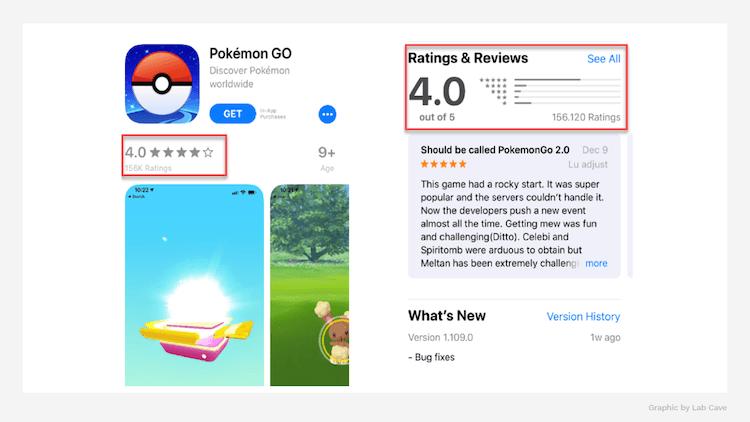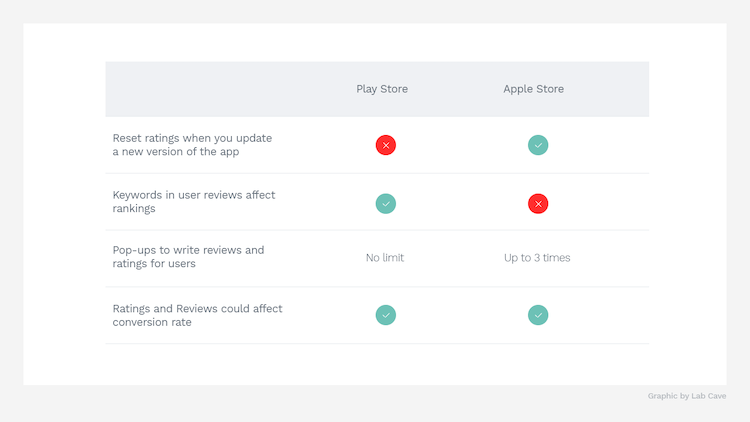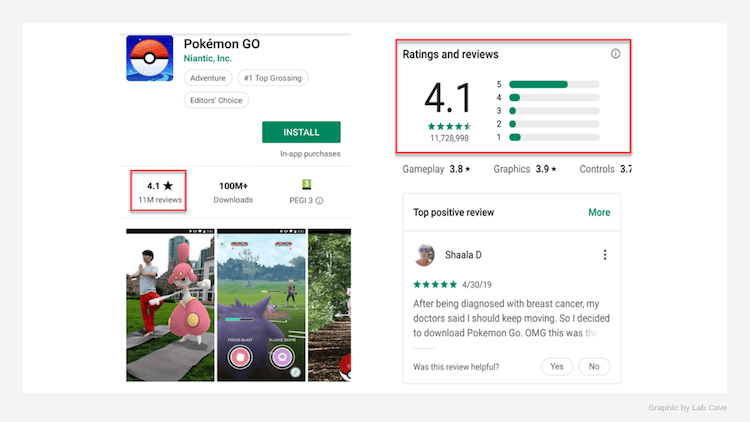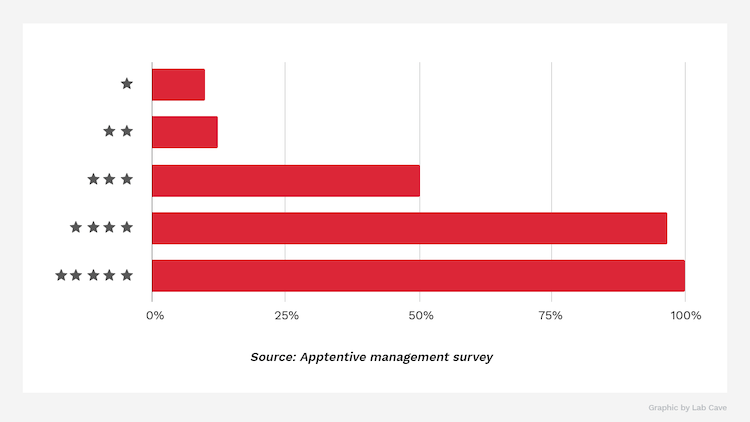
Reviews and ratings are the way users express their thoughts on your application. Your app can be rated from 1 to 5 stars, 5 stars being the highest rating. Users can also write their experience with the app in the review, whether they like it or not, or even request new features.
When thinking of App Store Optimization (ASO) the first thing that jumps to people’s minds is to improve the visual elements of the app and often the impact of app ratings and reviews is ignored. In fact, reviews and ratings have always been an important factor that affects ASO rankings. User reviews are also one of the most important channels to collect user feedback on your app. In both stores, developers have the chance to respond to user reviews. This gives the application store an approachability that can help improve user retention, conversion rates and enhance the brand image.
In this article, we will outline the different appearance of ratings and reviews and how they affect the conversion rates for both stores. We will also analyze the impact that the developer’s response has on your app.
Layout and differences in App Store and Play Store
First, we will talk about the differences between both stores from the point of view of Ratings and Reviews in the table below:
On the other hand, the layout of the two stores is a little bit different, as we can see in the following pictures:
– Apple Store: we can see the stars rating and the total ratings of the app. We can also see the users’ reviews at the end of the store listing page.

– Play Store: we can go to the end of the app’s store listing page to see the ratings and reviews. Unlike the Apple Store, the Play Store includes the ratings of gameplay, graphics and controls, as well as some additional information about the game at the end of the page.
How Ratings and Reviews affect the Conversion Rate
Whether it is a paid or free application, many users will check the average rating, the stars and reviews before downloading the app. This is a good reference for users, especially for paid apps, to decide whether to download the application or not.
It is also interesting to point out that the more keywords that appear in the user reviews of the Play Store, the easier it is to rank for those keywords in terms of search traffic. This helps to improve the visibility of your app, to increase the chance of being discovered by new users and ultimately increases the probability that your app will be downloaded.
Recently, Apptentive surveyed hundreds of users in order to find out how important star ratings and reviews are to an app’s success. Their results showed that 90% of users consider star ratings to be an essential part of their evaluation.
In the following graph we can see what the minimum star rating needed for users to download an app is:
This chart illustrates that apps rated with two stars or lower are hardly downloaded by users, and only 50% of users will download a 3-stars app. The apps with 4-stars or more will get most of the installs. The more and the better the ratings and reviews you have, the more chances your app has to appear in the top of charts and to be more visible to new users. To conclude, you need to reach this objective – a minimum of 4-stars ratings – to have a good conversion rate.
A review (user feedback) is also very beneficial for both developers and users, because new users can decide whether or not to download the application through the experience of other users. From the developer’s point of view, you can learn from the reviews if you need to improve something in the app or fix bugs. Therefore, we think that is very important to adopt a strategy that invites users to rate your app positively.
Response in Play Store and App Store
Do you need to answer user reviews as a developer? Based on our experience, we believe that the developers should respond to the reviews written by all users, whether the reviews are positive or negative, and inform users of how and when they will optimize and improve the app. This can better the communication and experience on both ends. For example, if a user asks some questions in the review area, but no one responds, it will be a negative user experience. From the developer’s point of view, by collecting and responding to user feedbacks, and then working continuously to optimize their apps, it can increase product retention and extend the user’s life cycle. Therefore, interaction with users is essential.
According to our experience, it is important to respond positively to bad reviews. You must consider how to answer the problem put forward by the user. In the case of positive reviews, you should answer accordingly, because it will make users more confident to become your fans, and it will help spread a positive user experience.
Conclusion
To sum up, if you want a good app store page, don’t ignore the ratings and reviews of users because they are directly related to attracting users that will download your app. Besides, you will be able to make your elongate app’s lifecycle by improving visibility and user retention. Contact us to know more.










